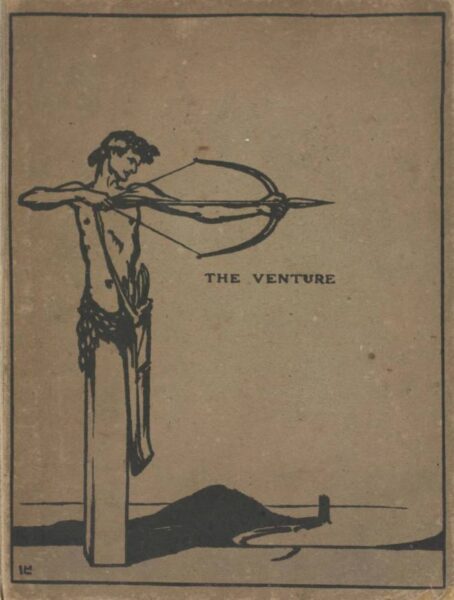by Holly Forsythe Paul
After the great success of the Kelmscott Press under the direction of William Morris (1834-1896), artists and bookmakers recognized that there was a niche audience willing to buy expensive books with daring or progressive subject matter as long as they were beautiful.
This change in the notion of the reading public, its taste and, particularly, its morality, liberated artists to make increasingly exotic books and periodicals. The ‘little magazines’ of the 1890s sprang up in this context. Beautifully designed and illustrated, they embody a different set of values from those we associate with Victorian orthodoxy: celebrating gendered, sexual, regional, or social alternatives.
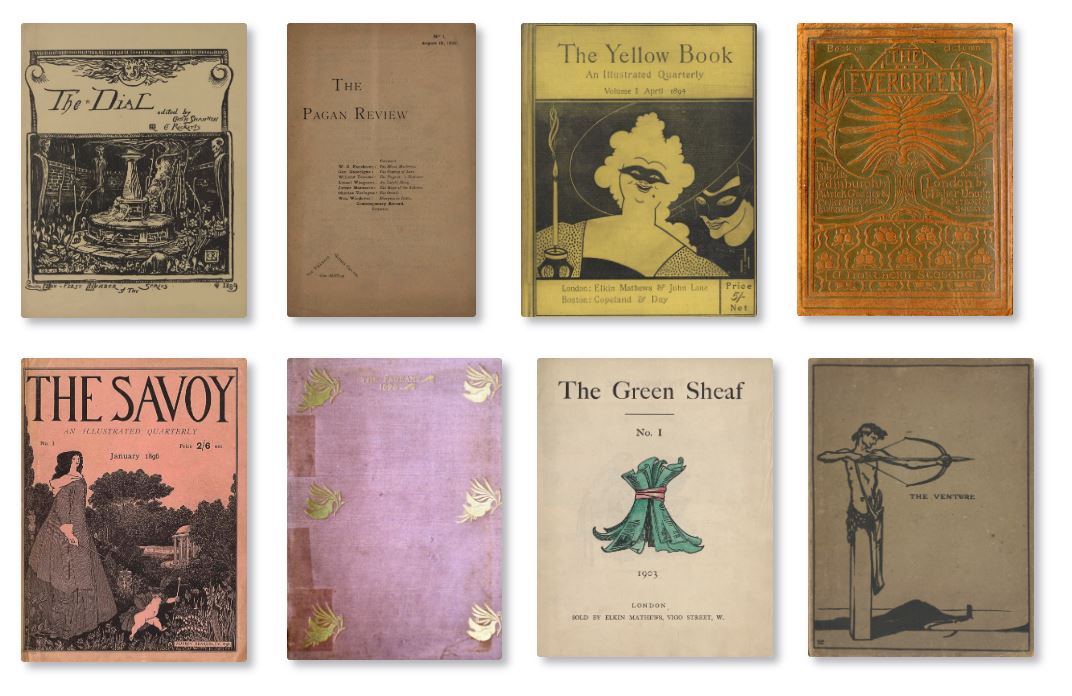
Printing changed in the 1890s, starting with the Pre Raphaelite concept of total book design, and the Arts & Crafts return to artisanal craftsmanship. High-quality volumes could be sold for very high prices and no longer needed a mass audience in order to become financially viable productions. First-rate artists were drawn from the canvas to the page as technological developments gave them more control and the development of a niche, connoisseur audience gave them more thematic flexibility. The “Little Magazines” of the 1890s are among the most prized results: an outburst of sophisticated, beautiful publications by the most talented, avant-garde artists of the Aesthetic Movement.
The current exhibition, available until April 30th 2024, features several of the “Little Magazines” held at TMU Special Collections, including The Dial, The Yellow Book, The Evergreen, The Savoy, The Pageant and The Venture.
The Dial: An Occasional Publication (5 issues, 1889-1897)
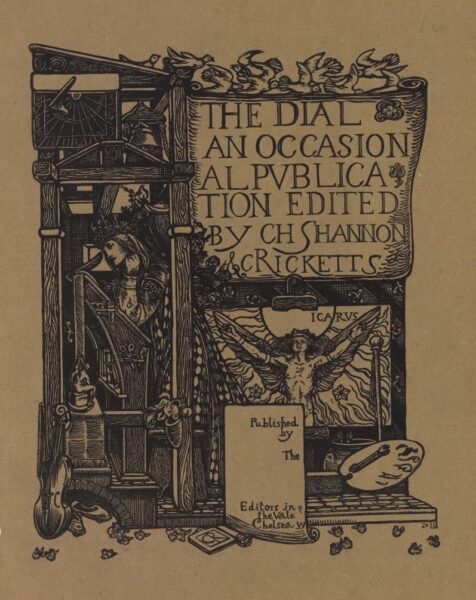
Produced by joint editors Charles Ricketts (1866-1931) and Charles Shannon, The Dial featured art and literature, much of it produced by a core bohemian circle who congregated at Ricketts and Shannon’s home. Unlike most Art Nouveau magazines, The Dial prominently features wood engraving and lithography, illustrative techniques in which the artist controls the means of production. Although only five issues were produced by a small group of artists for a niche audience. the artisanal integrity and harmonious design of The Dial had a major impact, influencing a revival in wood engraving and leading to Ricketts’s founding of The Vale Press (1896-1904).
The Yellow Book: An Illustrated Quarterly (13 issues, 1894-1897)
The Yellow Book embodies the “decadent” culture of the fin de siècle. Aubrey Beardsley (1872-1898) proposed a quarterly that would focus equally on art and literature to the publisher John Lane (1854-1925) with Beardsley as art editor & principal artist while Henry Harland (1861-1905) acted as literary editor. Taking the colour yellow as a nod to risqué Continental literature and producing grotesque and suggestive images designed to shock the uninitiated, Beardsley courted controversy and found it. Fearful of Beardsley’s association with Oscar Wilde (1854-1900) when the latter was arrested for “gross indecency,” Lane fired Beardsley. The change from daring to conservative content that starts with the fifth issue highlights Beardsley’s impact on the early volumes.
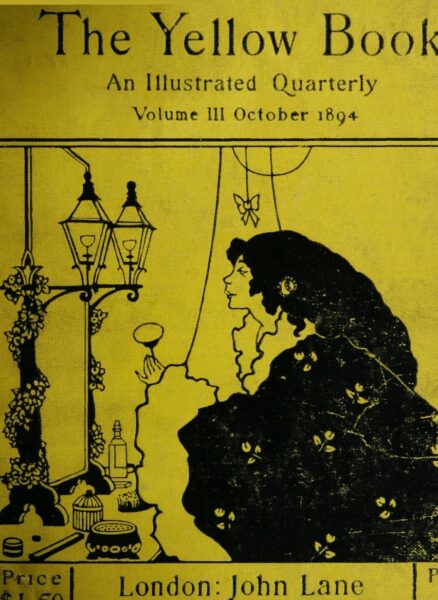
The Evergreen (4 issues, 1895-1896/7)

Reflecting the diverse concerns of its polymath sponsor, Patrick Geddes (1854-1932), The Evergreen blends interests in ecology and urban renewal with a celebration of the Scottish Renascence and the Celtic revival.
These conservationist & post-colonial priorities are manifest in the periodical’s appearance, particularly its type. The Evergreen was printed by Edinburgh’s foremost arts-and-crafts printer, Walter Blaikie (1848-1928), and deliberately revives Celtic art in its ornaments. Copies bearing the coloured leather bindings designed by Charles Mackie (1862-1920), with a stylized tree on the upper cover, are especially prized.
The Savoy (8 volumes, 1896)
When Aubrey Beardsley was fired from his role editing The Yellow Book, Leonard Smithers (1861-1907) seized the opportunity to enlist the talented artist. Like The Yellow Book, The Savoy combined art and literature, and adopted the format of the book, with stiff board covers, high-quality paper, and fine illustrations. In its pages, we can trace Beardsley’s departure from the influence of Japanese woodcuts to the rococo style of 18th-century France, with much more fine detail and texture. After two quarterly issues, Smithers retooled The Savoy as a monthly magazine, changing its format, streamlining the contents, and lowering the price. Although it ultimately failed to find an audience, it is a remarkable attempt to extend avant-garde art to a wider public.
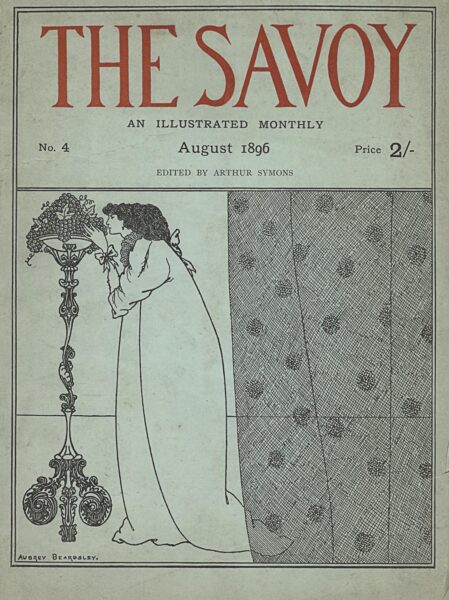
The Pageant (2 volumes, 1896 & 1897)
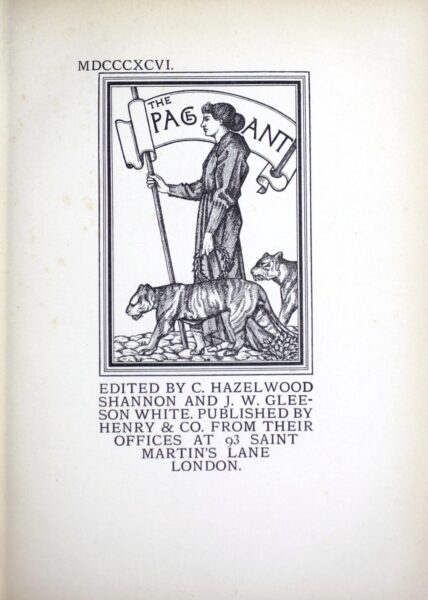
Edited by Charles Shannon (1863-1937) and Gleeson White (1851-1898), The Pageant connects the little magazines to the earlier genre of the Christmas Annual. Like the Ladies’ Annuals that had been a dominant genre in the book market in the 1830s, The Pageant offered reproductions of famous works of art in print. Unlike its predecessors, this avant-garde journal had a distinctly sophisticated & intellectual array of content, including art history, ancient myth, modern western culture, and decadent cosmopolitanism. In this respect, The Pageant connected the Aesthetic movement to a long tradition of European art.
The Venture: An Annual of Art and Literature (2 issues, 1903-1905)
The Venture was published by gallery owner John Baillie (1868-1926) and edited by Laurence Housman (1865-1959) and W. Somerset Maugham (1874-1965). Determined to make The Venture into a “book beautiful”, Baillie enlisted James J. Guthrie (1874-1952) to print the letterpress and wood engravings of the first volume and Bernard Newdigate (1869-1944) to print the letterpress for volume two in collaboration with specialists in etchings, line blocks, lithographs, and photogravures.
The Venture is beautiful and notable for its high literary quality, but failed to find a large audience. As its title indicates, producing a high-brow annual was always imagined as a risk.
